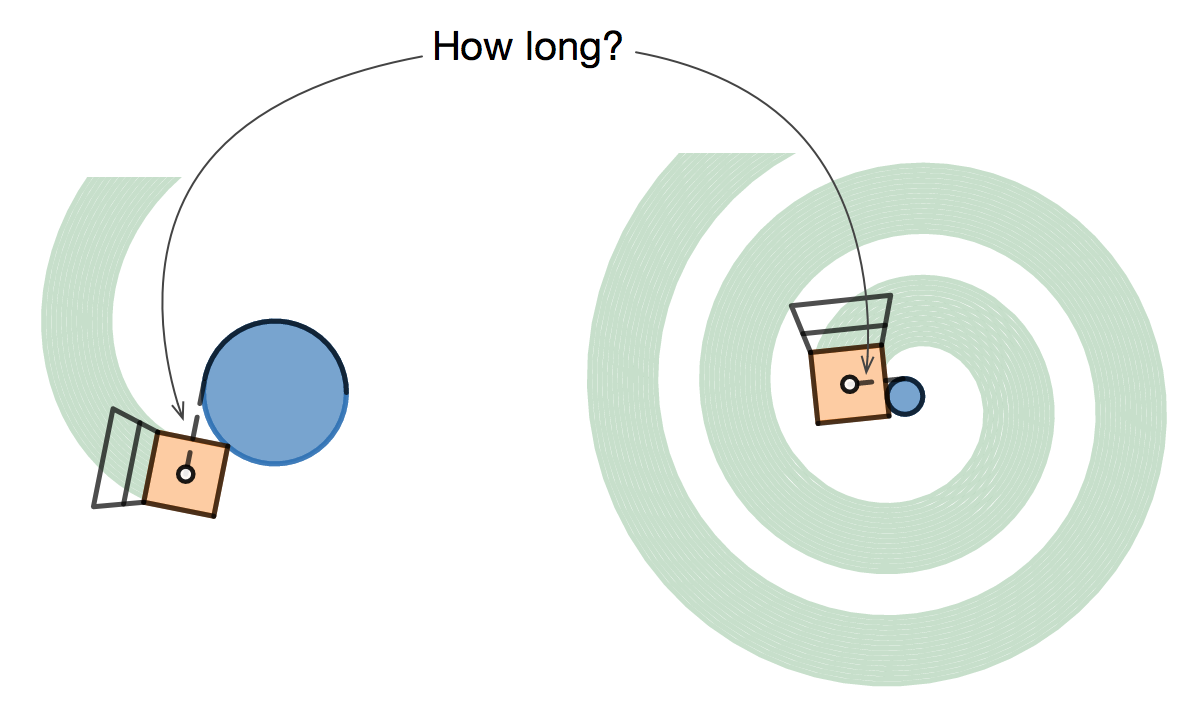Lawnmower Puzzle
08 Apr 2017One of the joys of being an engineer at Desmos is that my collaborators occasionally bring me math problems that they need to solve to make something that they’re building work right. I love tricky little geometry problems, and I’d solve them as a hobby if they weren’t part of my job. When it helps our team get on with the work, so much the better.
In today’s post, I’d like to share one of these puzzles that came up while building Lawnmower Math, and invite you to solve it yourself.
The activity is centered around a lazy lawnmowing scheme: tie the mower to a peg in the center of the lawn with a length of rope, and then sit back and sip your lemonade as the mower cuts an autonomous spiral in toward the peg (see the video evidence on screen 2 of the activity). But the peg needs to be just the right size to mow the lawn efficiently with no gaps and not too much overlap between passes. In the activity, students interact with animations to build intuition before developing a mathematical model of how large the peg should be.
Building the animations for this activity brought up a different but related mathematical challenge. You want the mower to stop moving at the moment it collides with the peg. Collision detection can get pretty tricky, and that’s the puzzle I’m posing to you: how much rope remains unspooled from the peg when the mower collides with it?

At this point, I’m tempted to state the question formally with named variables, labeled angles and such. But instead, I’ll follow Dan’s lead and leave the work and the joy of formulating the problem to you. In other words, I’ll be less helpful.
Feel free to e-mail solutions to jason@shapeoperator.com. There won’t be any prizes, but I’ll give a shout out to anyone whose solution teaches me something, and I’ll post my own solution some time next week.
Update: my solution is now available.